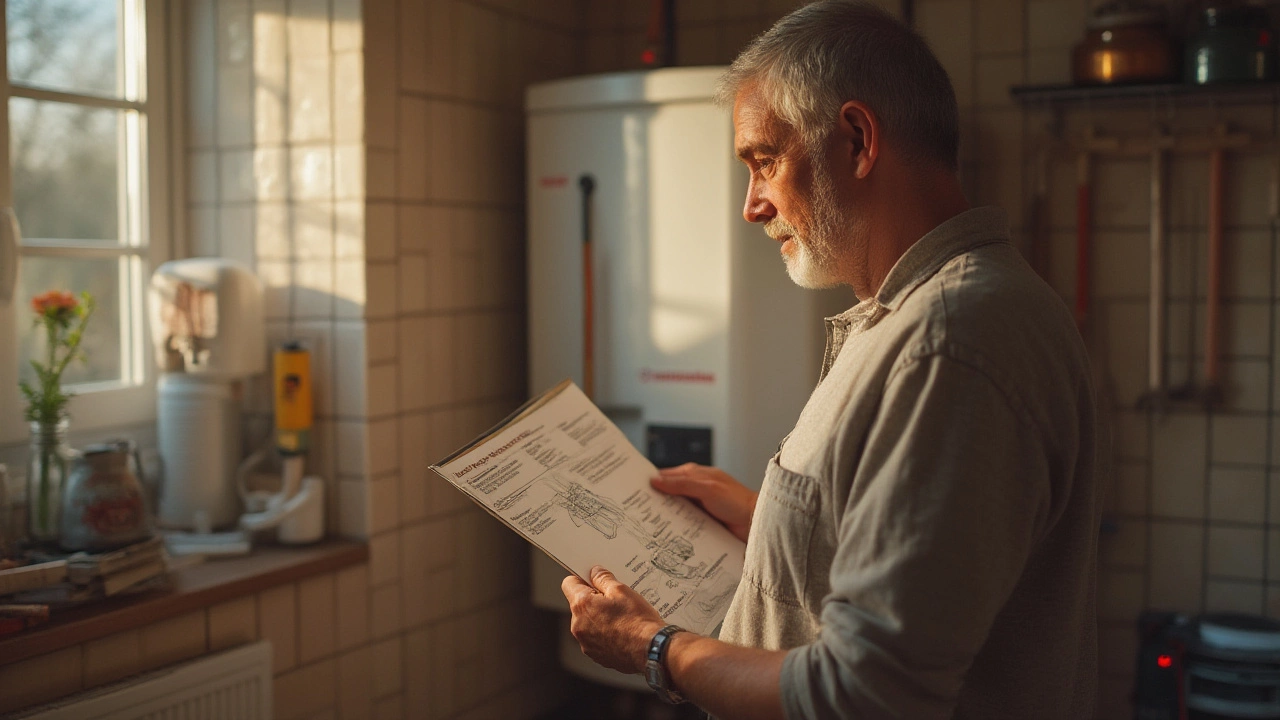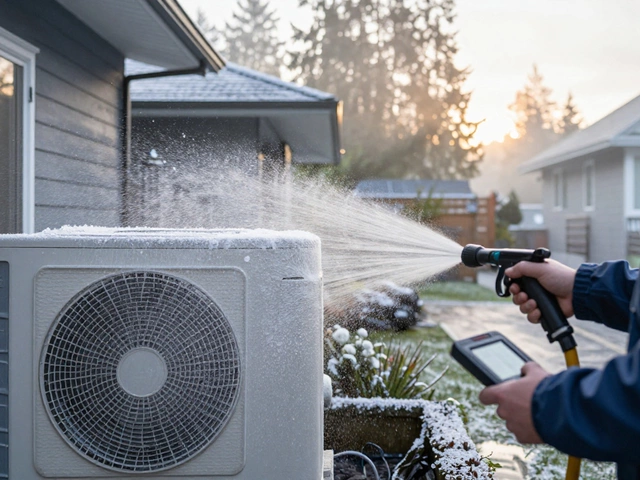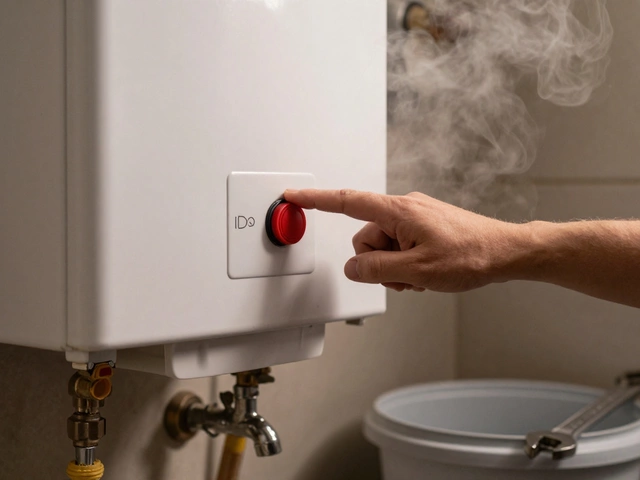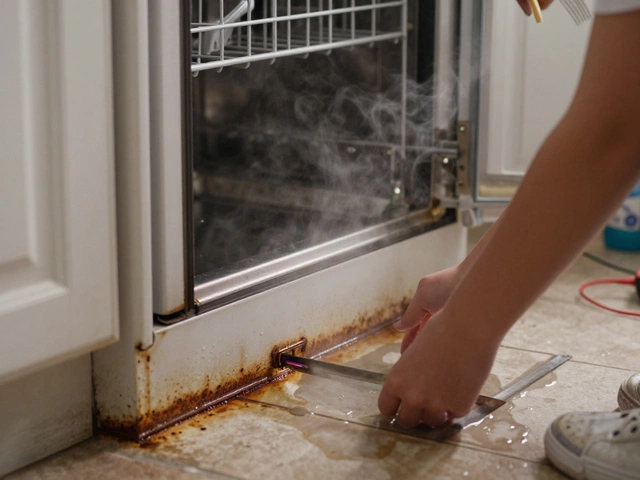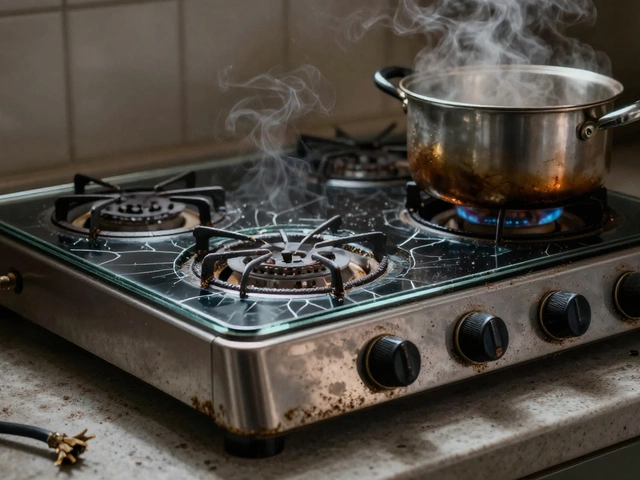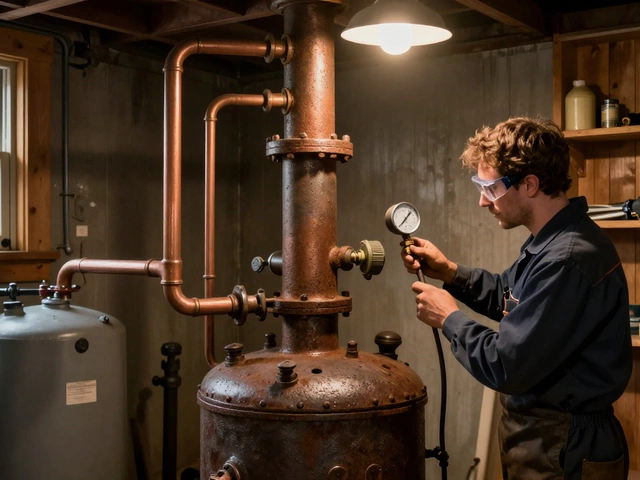Picture this: it's a brisk morning and you step into your shower, only to be blasted by arctic-level cold water. You check the sink — still cold. You’re not alone; a huge number of households run into water heater issues every year, and the reset button often becomes the hottest topic in your household on days like this. But here's the confusing part — how long do you actually need to hold that reset button on your water heater? Is it just a quick tap, a five-second prayer, or something you have to press and hold until your arm starts to ache? Messing this up leads to more frustration than answers, so it pays to know exactly what you’re doing.
Why Water Heaters Need a Reset Button
Water heaters seem like these giant, silent sentinels tucked away in a closet or basement corner… until something goes wrong. The reset button, which sometimes gets called the "energy cut-off" or ECO button, actually hides a vital safety feature. Most units — whether gas or electric — have a thermostat and safety sensor system. When things get a little too hot, or if there's a spike in electricity, that sensor trips and cuts the power to the heating element. It saves you from dangerous pressure buildups or electrical fires.
If your heater is electric, you’ll usually find a single red reset button behind an access panel near the thermostat. Gas heaters usually don’t have one; they rely more on a thermocouple or flame sensor. The U.S. Department of Energy even notes that too many resets could point to electrical issues, a faulty thermostat, or that the heater’s safety cutoff is working overtime — not what you want for daily reliability. So that button isn’t just a convenience. It’s a warning and your first line of defense against serious trouble. If your water is turning cold repeatedly and that button keeps popping out, your heater is practically waving a red flag, screaming for attention.
Interestingly enough, there are industry standards. Most UL-listed electric water heaters come with this reset mechanism, and it’s designed to trip at about 170–180°F, well above normal operating temperatures. That safeguard has been responsible for preventing thousands of malfunctions that otherwise could have led to costly, or even fatal, accidents. If you’re ever wondering whether it’s safe to keep resetting, think about what triggered the cut-off: was it an electrical short, a faulty element, or just a power outage?
The Right Way to Hold the Reset Button
So here’s what you came for: how long do you need to push the reset button? For most modern water heaters, the answer is pretty simple — just 3 to 5 seconds. It's not some magic number, but manufacturers build them to respond to a firm, steady push lasting a few moments. You don’t need superhuman strength, but don’t just tap or flick it either. When you push and hold that red button, you should feel a light click; that’s the internal switch resetting the safety circuit.
Before you get there, though, make sure you turn off electrical power at the breaker. No need to risk a zap. Water and electricity play a dangerous game together, so safety always comes first. Once the panel's open, press the reset button firmly for up to five seconds, then release. If you hear or feel a definite click, that’s usually your signal that it worked. After that, close up the panel, flip the breaker back on, and give the heater about 30–60 minutes to start producing hot water again.
If you need to check your user manual, do it — there are always some outlier units that might need a slightly longer press. Some Rheem or AO Smith models suggest up to 10 seconds. But don’t stand there holding it for a full minute. Most water heaters simply aren’t built for it. If nothing happens after a regular press-and-hold, something deeper might be broken — a faulty thermostat, burned out heating element, or electrical problem in the wiring behind the panel.
By the way, if you have to reset the button more than once a month, that’s not normal. It’s a band-aid, not a cure. The most common trigger? Sediment building up and trapping heat, or elements failing after years of service. Don’t just keep resetting without getting to the real issue; that’s like refilling a tire with a nail stuck in it.
Steps to Safely Reset Your Water Heater
- Turn Off Power: Go to your breaker panel and shut off power to the water heater. This is non-negotiable.
- Find the Reset Button: Pop the access panel (usually with a screwdriver), peel back any insulation, and look for the red or black button.
- Press and Hold: Push the reset button for 3–5 seconds. If you feel a click, you’re on the right track.
- Restore Power: Put insulation and the cover back, then flip the breaker on.
- Wait for Hot Water: Give the tank up to an hour. Open a hot tap to check if it’s working.
Here’s one common mistake people make: they skip the breaker part. Even if your hands are bone dry, don’t risk it. Another tip? Check your warranty sticker or heater age; anything over 10 years and repeated resets starts to mean it might be time to consider a replacement instead of another fix.
For those living in hard water areas, consider flushing the tank every year. Sediment and mineral buildup can trap sensors, making the thermostat think water is hotter than it actually is — which leads straight to tripping that reset button. In Texas and Arizona, for example, hard water’s notorious for this. A garden hose and a nearby drain are all you usually need to flush out what’s packed up inside, preventing future trouble.
If the reset button won’t stay in, or if it pops back out every time you use hot water, that signals something deeper. Don’t ignore burn marks or melted insulation around the thermostat. It’s a job for a professional when you see those tell-tale signs. And whatever you do, never bypass or disable the reset. That’s a quick path to serious safety risks.
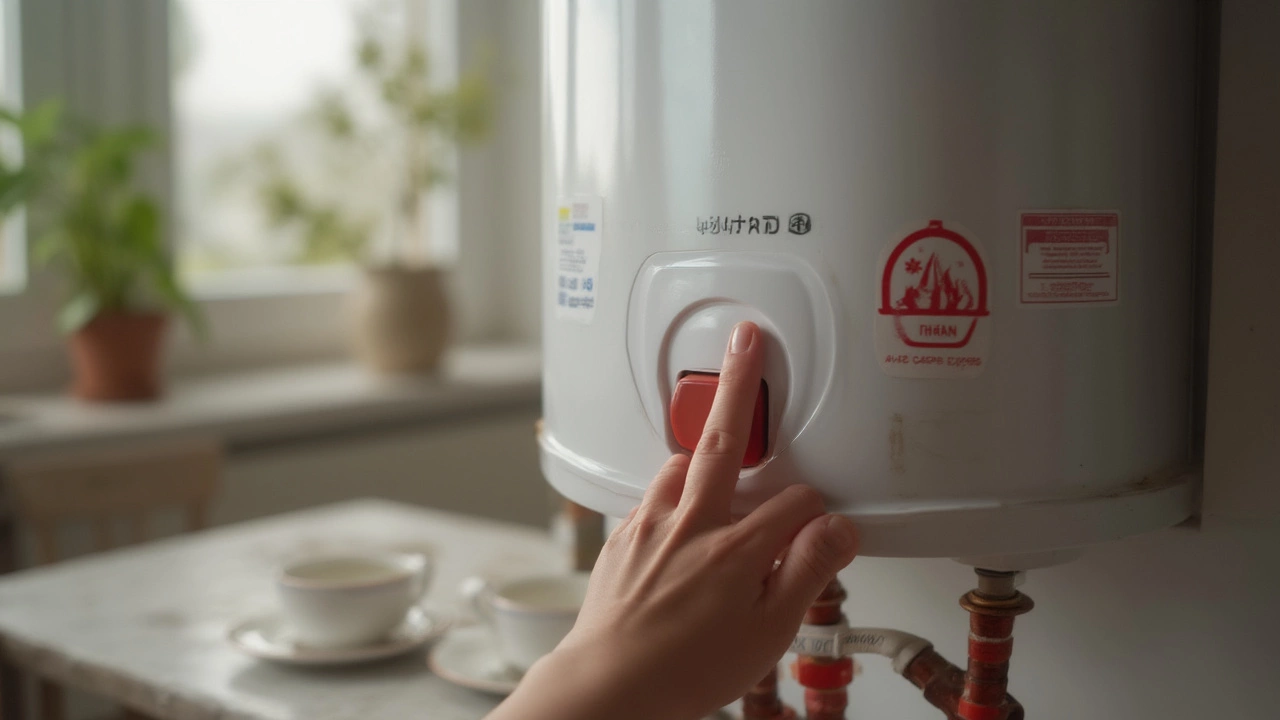
Why Your Water Heater Keeps Tripping
If your reset button is constantly tripping, think of it like your car’s check engine light — it’s trying to help, not annoy you. Do a little detective work. First, check for obvious issues, like a stuck thermostat stuck on “max,” or a shorted heating element. Most elements only last 6–10 years, and when they fail, they can create dead shorts. That’s one of the most common reasons for repeated resets. Sometimes a recent power surge or outage will trip the system, especially after storms.
Then there’s the issue of wiring. Loose connections or frayed wiring in older homes can cause unpredictable resets, sometimes even sparking behind the panel. And don’t forget about sediment — it can act as a blanket, tricking the sensor into thinking water’s dangerously hot, when really the heating element can’t heat efficiently. A 2019 survey from a leading home inspector group found that 18% of electric heater issues tied directly to sediment and mineral deposits built up on thermostats or elements.
If you’ve ruled out obvious issues, but the reset still trips, try these checks:
- Is the breaker oversized or undersized? Too much current flow can cause regular trip-outs.
- Check for loose or corroded wiring at the heater terminals.
- Test the thermostat itself — some models let you do a quick resistance check with a multimeter.
Just remember: if you feel uncomfortable taking a panel off, or you see anything that looks burned or melted, it’s time for a pro. Many fire inspections trace their source to faulty DIY heater work gone wrong. And if you rent, always let your landlord know — water heater repairs stay their responsibility, not yours.
Something else a lot of people don’t realize: certain modern water heaters come with digital diagnostics. You might see a blinking light code, which you can check in your owner’s manual and sometimes reset via a control board inside. Pay attention to those codes — they often tell you exactly what’s wrong, saving you time when the technician arrives.
When the Reset Button Doesn’t Work: Next Steps
If you’ve tried the reset and nothing’s changed — no hot water, or the button won’t stay reset — that can be frustrating. Don’t just hit it again and hope for the best. Every manufacturer builds a limit to how many resets you should try; most recommend two or three resets, total, before turning off the power and calling in backup.
First, wait 15 minutes and try powering up again. Sometimes the button needs a few seconds after being pressed to rearm safely. If it keeps tripping instantly, unplug the unit or shut off the breaker completely. Continued resets can ruin the thermostat or start to damage internal wires, ramping up the risk for fire hazards.
Here are your next troubleshooting steps:
- Look for leaking, rust, or excessive moisture inside the access panel.
- Sniff for burning plastic — it’s not normal.
- Use a voltage tester (with power OFF) to check for standing current on terminals.
- Check your hot water tap — if it smells like rotten eggs, a failing anode rod might be causing internal problems that force resets.
If you’ve recently changed your thermostat or element and the reset still trips, double-check for crossed wires or installation mistakes. Happens more than you’d think, especially with older homes where wiring colors or standards have changed. Some people even find that mismatched thermostats (wrong voltage or size) can cause cycles of resets and cold water.
There are horror stories of folks who bypassed the reset out of frustration, only to have their heater boil over, leaking rusty scalding water everywhere. Not a mess you want to deal with. Always treat repeat reset trips as a sign you need a fresh set of eyes — certified ones. Manufacturers recommend regular maintenance, and newer tankless systems may even “lock out” if reset is ignored too many times.
Finally, if nothing works but your heater is still under warranty, reach out to customer service before tinkering further. Unauthorized repairs could void any protection on the appliance.
Tips to Keep Your Reset Button from Ruining Your Morning
First tip: schedule a yearly flush of your water tank. Sediment buildup makes everything work harder and can trick the system into overheating, which is the fastest way to trip that button and lose hot water. All it takes is a hose and half an hour, and a little effort here prevents a lot of headaches later.
Another practical step — check your water pressure. A pressure-reducing valve installed on your main line can keep your heater operating in the normal range (typically 50–60 psi). High pressure accelerates failures, especially on sensitive thermostat systems, causing unexpected resets.
If you live in a region known for power surges (hello, Florida thunderstorm season), get a surge protector installed on your water heater’s dedicated line. A spike can fry the sensitive electronics in newer digital models, and even older analog thermostats aren’t immune. Given that the average cost of replacing a fried water heater is over $1,200, a little prevention is worth the peace of mind.
Test your hot water temperature every few months. The Environmental Protection Agency suggests a sweet spot of 120°F for safety and efficiency. Higher than that, your reset trips more frequently; lower than that, you risk bacterial growth. Most thermostats have a dial you can adjust — just remember to power down before opening the panel to check.
Finally, don’t ignore your water heater’s cries for help. If the reset button is your new daily routine, or you spot rust, leaks, or weird odors, it's time to call an expert. Treat reset trips as your system’s way of telling you it's stressed. Respond fast, and you’ll not only have hot showers but also a safer home. The reset button — it’s more than just a band-aid; it’s an early warning sign for issues that, left untreated, can snowball quickly out of hand.
